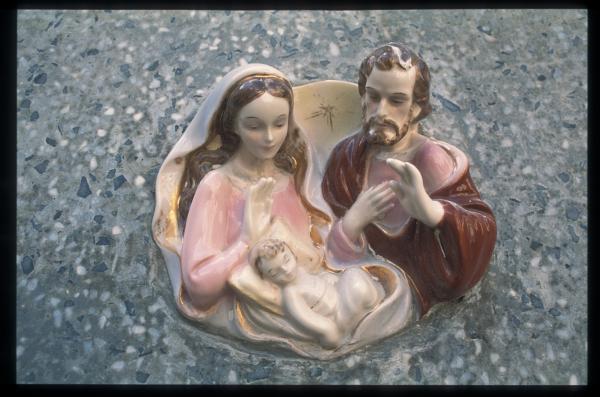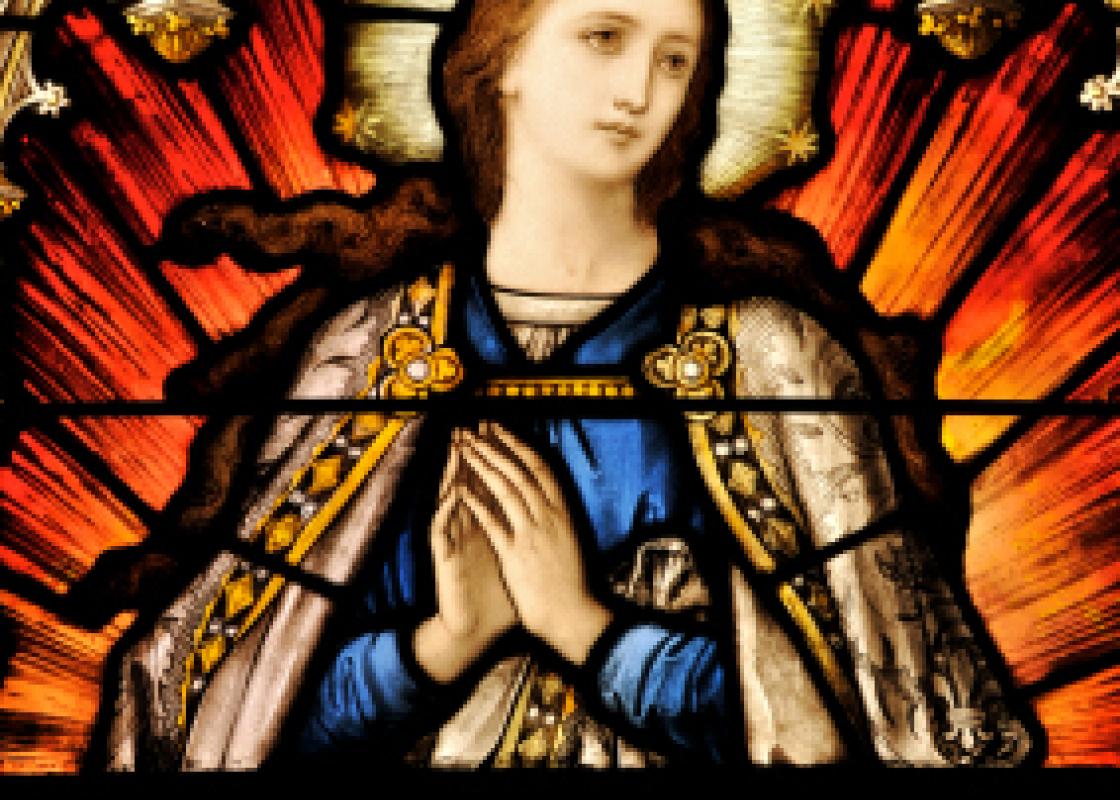
The year is 1993 and Norway’s eleven dioceses receive a suggested liturgy for use on the International Women's Day on March 8 and the Annunciation Day. A working group has created a liturgy, the set of rituals that are performed in church, for the Church of Norway, with a language that aims to be more inclusive of women. The idea is that the liturgy will be distributed to congregations all over the country.
– All hell broke loose, says theologian and researcher Merete Thomassen, who in her recent doctoral thesis has analyzed gender-inclusive liturgical language in the Norwegian church service. Four of the dioceses refused to use the liturgy from 1993 and there was a heated media debate. People were most opposed to the new liturgy’s use of the phrase “God, our mother and father”.
Female = sexual
– The debate clearly showed that the masculine is perceived as neutral. Bishops and other theologians stated that calling God “mother” makes God more gendered. They seriously felt that this created a sexualized image of God, and that it might invoke a different god; not the Christian one, but the god of a heathen, Gnostic fertility cult, the researcher says.
Thomassen emphasizes that she knows many people, both women and men, who find the traditional theology deeply meaningful. Changing the theological language stirs up a lot of emotions.
– But the debate reveals a strong fear of what will happen if we don’t call God by the right name, as if we are invoking a different god. Theologian Jone Salomonsen has shown that an almost magical language theory lies underneath; a primitive notion of religion surfaces, she says.
Female = mother
Thomassen, however, feels that it is just as interesting to discuss the views of those who defended the new liturgy.
– They talked about God’s feminine sides and how these become evident particularly when we speak of God’s care for people. When we speak of God’s power, on the other hand, God is masculine, she says. This wasn’t news to Thomassen.
– I have always disliked the way women are portrayed in theology. I wasn’t interested in feminist theology as a student because I didn’t identify with the “difference feminist” image of women that was presented there, she says.
– At the same time I was painfully aware of the fact that the church oppressed women, and as a female minister I had chosen a controversial path. So that was a bit of a dilemma for me.
Like a mother

Thomassen had almost finished her theology studies when the debate surrounding the March 8 liturgy broke loose. She was asked to join a committee that would continue to work on a liturgy with a more inclusive language. Not until 1996 the new liturgy was approved by the Church of Norway National Council and published in a booklet.
So what is wrong with the language of the traditional liturgy? Thomassen believes that it stems from the idea that humans are created in God’s image. For what does that really mean, she asks.
– Can women be of God’s image if God is a man? There is today broad agreement that both women and men are created in God’s image, but speaking of God as something other than a man is a whole different matter, Thomassen explains.
In the feminist liturgy debate there was much talk of metaphors and their meaning. The liturgy was approved with the use of the phrase “God, you are like a mother and father to us”. The metaphor “God is our mother” was not accepted.
The church is our home
When God became a woman She also became a mother, Thomassen points out.
– This is true of the liturgy in general: Women are referred to as mothers and no matter what else they have done their role as mothers become the main issue. Many theologians still speak of a natural God-given gender polarity. My question is: Have feminist theologians included this viewpoint to make the new liturgy more acceptable, the theologian says.
When God is like our mother and father and the church is our home, and the congregation no longer consists of brothers, but of brothers and sisters, we all become one big happy family. Or do we?
– When the gender-inclusive language also employs family categories heteronormativity continues to be deified. This shows yet again that it is far too dangerous to challenge the heteronormativity of the church, says Thomassen, who hopes that her dissertation will help raise consciousness around these issues. She finds many good intentions; many sermons speak of the narrow gender norms that exist, and refer to how Jesus recognized unconventional women that he met: Cheeky women who behaved in an inappropriate manner, but who managed to change Jesus’ mind with the use of their intellect.
– These stories are used by preachers to show how gender norms can be changed. But it is more difficult to change other parts of the liturgy, and it is too easy to go back to the old pattern, says Thomassen. She says that it is of course difficult to think abstractly about language structures in a world where women still have to fight to be allowed into priesthood. Poststructuralist gender theory doesn’t work so well with the church, at least not yet.
When the family model becomes disastrous
– Personally I don’t mind praying to God as a father, but I don’t only want to pray to God as a father, the theologian says. In her work for the Church center against violence and sexual assault she has met people who don’t feel safe with a god who is referred to as neither Father nor Mother – the family model can simply be disastrous. Not everyone sees home as a safe haven.

– I’m advocating using many different metaphors for God. Also non-human metaphors, because God is more than a human being. If we call God our Father we only refer to one side of him, but God is more than our language can express. The Bible is a positive example in that sense. It employs a long list of metaphors. In the Norwegian pietistic tradition, however, we use the same four metaphors over and over: Father, Lord, King and Shepherd, says Thomassen.
She points out that the more metaphors we use for God the more obvious it is that they are metaphors. When something is taken literally it is no longer a metaphor. In ancient Christianity there was a wide range of metaphors, and this continued after the canon formation in the fourth century. But after the Enlightenment it becomes more and more common to portray God as a man.
A place free from demands
– God has rarely been a woman, but much more often a man. For someone who has been sexually assaulted metaphors related to nature may seem a lot more reassuring: God as a tree, a rock or a green meadow. A place free from demands where you can find peace will be more meaningful to people who haven’t felt safe with their own parents, she says.
Thomassen believes the issues she raises are relevant also outside of theology.
– In Western culture we are all influenced by Jewish-Christian notions of gender, whether we are religious or not. In that sense this dissertation is important. It exposes the perseverance of certain notions, like the fact that the masculine is perceived as neutral, she says.
Translated by: Vigdis Isachsen
Thomassen, Merete: Kjønnsinkluderende liturgisk språk: en analyse av norske gudstjenester under Det økumeniske tiåret 1988–1998. (Gender inclusive liturguícal language: an analysis of Norwegian services during the Ecumenical decade 1988-1998). University of Oslo 2008.
Thomassen is presently employed as a lecturer at the Practical Theological seminar, University of Oslo, and also works at the Church centre against violence and sexual assault.
Aktuelle lenker
«The Ecumenical Decade 1988–1998: Churches in Solidarity with Women» was a project launched by the World Council of Churches which the Norwegian church partook in. However, the distributed liturgical material wasn’t considered appropriate for the situation in Norway. A decision was made to develop a Norwegian material and the result was a booklet containing four liturgies from church services held in Oslo in 1994-95. Of these there are three themed services: Women’s longing, Women’s wrath, Women’s faith and a March 8 service. The 1993 church service was included for historical reasons and was not meant for use. In addition, the booklet contained an article which explained the choice of phrasing and the theological background.
